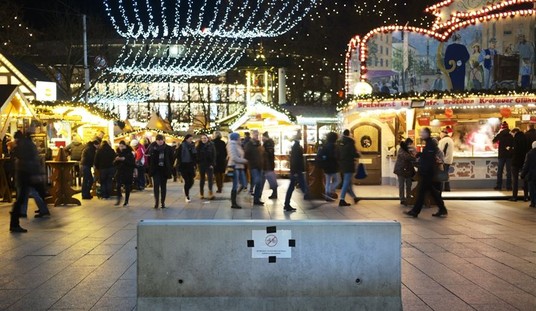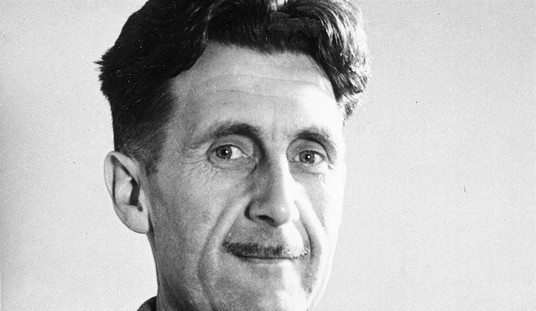“Sunday Reflection” is a regular feature, looking at the specific readings used in today’s Mass in Catholic parishes around the world. The reflection represents only my own point of view, intended to help prepare myself for the Lord’s day and perhaps spark a meaningful discussion. Previous Sunday Reflections from the main page can be found here. For previous Green Room entries, click here.
This morning’s Gospel reading is Mark 14:12–16, 22–26:
On the first day of the Feast of Unleavened Bread, when they sacrificed the Passover lamb, Jesus’ disciples said to him, “Where do you want us to go and prepare for you to eat the Passover?” He sent two of his disciples and said to them, “Go into the city and a man will meet you, carrying a jar of water. Follow him. Wherever he enters, say to the master of the house, ‘The Teacher says, “Where is my guest room where I may eat the Passover with my disciples?”’ Then he will show you a large upper room furnished and ready. Make the preparations for us there.” The disciples then went off, entered the city, and found it just as he had told them; and they prepared the Passover.
While they were eating, he took bread, said the blessing, broke it, gave it to them, and said, “Take it; this is my body.” Then he took a cup, gave thanks, and gave it to them, and they all drank from it. He said to them, “This is my blood of the covenant, which will be shed for many. Amen, I say to you, I shall not drink again the fruit of the vine until the day when I drink it new in the kingdom of God.” Then, after singing a hymn, they went out to the Mount of Olives.
Today’s readings take us through a particular thread of the path to salvation. Let’s start with a more literal path, that of the walk to the Mount of Olives after the Last Supper. It’s not a short stroll from the Upper Room to the Mount of Olives. The disciples would have to pass by the Temple and across the Kidron Valley (as John 18:1 describes), at night. The Garden of Gethsemane lies along that path, a little past the Temple and just on the other side of the Kidron Valley, at the foot of the Mount of Olives.
Why go there, if Jesus waited to be arrested by the Temple authorities? Judas had gone out from the Upper Room shortly after the breaking of the bread for Passover. It might have been easier for Jesus to wait there; surely Judas would have brought the guards there first, although he certainly knew to look in Gethsemane (John 18:2). Instead, Jesus goes to the foot of the mountain, with only a couple of the disciples to stand watch with him, who end up being unable to stay awake to give Jesus comfort in his agony.
Our other readings give us a hint of what Jesus may have had in mind. In Exodus 24:3-8, Moses erects an altar to the Lord for sacrifices in His name. The Lord had just given Moses the Law, and the sacrifice of “holocausts and young bulls,” with the blood of the sacrifices of the Israelites splashed on the altar and on the people to seal the covenant between God and the Israelites. As he sprinkled it on the people who had “with one voice” pledged to “do everything the Lord has told us,” Moses said, “This is the blood of the covenant that the LORD has made with you in accordance with all these words of his.”
Of course, at that point Moses went back up the mountain to commune further with the Lord for forty days. During that period, the people created the Golden Calf — a pretty good indication that humanity would struggle mightily with the concept of covenant, faithfulness, and obedience.
Back to the point, though. Where did Moses build the altar for that sacrifice of the Covenant? At the foot of the mountain. Theophanies and revelations often took place on mountains in the Old Testament, and even in the New Testament. The Transfiguration — in which Moses and Elijah appear to the frightened disciples — took place on Mount Tabor, for instance. In this case, Jesus’ sacrifice of himself starts at the foot of the mountain that overlooks the Temple, starting the Passion that would end by Jesus pouring out His blood on all of the people to wash away their sin and inequity. It completes the cycle Moses started at Sinai, and perfects it in Jesus.
In our reading from Hebrews 9:11-15 today, Paul explains this completion more expertly:
When Christ came as high priest of the good things that have come to be, passing through the greater and more perfect tabernacle not made by hands, that is, not belonging to this creation, he entered once for all into the sanctuary, not with the blood of goats and calves but with his own blood, thus obtaining eternal redemption. For if the blood of goats and bulls and the sprinkling of a heifer’s ashes can sanctify those who are defiled so that their flesh is cleansed, how much more will the blood of Christ, who through the eternal Spirit offered himself unblemished to God, cleanse our consciences from dead works to worship the living God.
The sacrifice has changed, but not the need to sacrifice. Later in the same epistle, Paul exhorts the church to “continually offer up a sacrifice of praise to God, that is, the fruit of lips that acknowledge his name.” Paul does not say that we are no longer bound to come together in worship, praise, and sacrifice, but that the imperfect has passed away, eclipsed by the perfected sacrifice of Jesus Christ.
How did Christ Himself instruct us to do so? By breaking the bread and drinking the wine; “Do this in remembrance of me” (Luke 22:19). That is our participation the covenant, the one perfect sacrifice for the forgiveness of sins. Paul writes in Hebrews that there is no forgiveness of sin without blood, but this sacrifice now comes from God as a gift freely given to ransom us from our guilt. It is a “mystical Supper,” as the icon by Simon Ushakov calls it, one Passover in eternity to which we connect through our worship, praise, and sacrifice in order to participate in its salvation.
The imperfect has been eclipsed by the perfect. That’s worth a short walk in the dark to reach the light.
Today’s front page image is the 17th-century icon The Mystical Supper by Simon Ushakov.







Join the conversation as a VIP Member